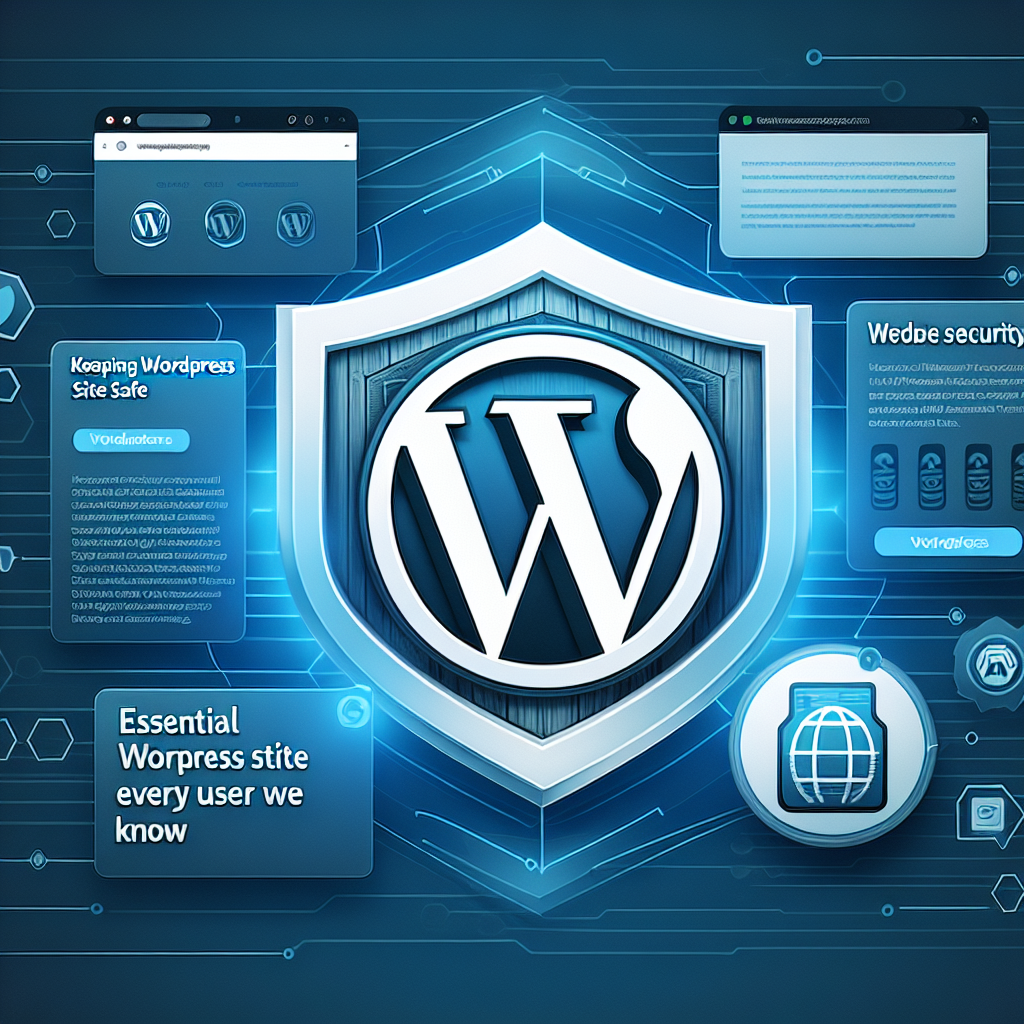
WordPress is an incredibly popular platform for websites, with over 35% of all websites on the internet being powered by the platform. However, this popularity also makes it a prime target for hackers and malicious attacks. If you own a WordPress site, it’s essential to take steps to ensure its security to protect your data and your visitors’ information. Here are some essential security measures every user should know to keep their WordPress site safe.
1. Keep WordPress and plugins up to date
One of the simplest yet most effective ways to protect your WordPress site is to keep it updated. Developers release regular updates to fix security vulnerabilities, so it’s crucial to install these updates promptly. Make sure to update not just WordPress itself but also all plugins and themes installed on your site.
2. Use strong passwords
One of the most common ways hackers gain access to websites is through weak passwords. Make sure to use strong, unique passwords for your WordPress admin account, FTP accounts, and database. Consider using a password manager to generate and store complex passwords securely.
3. Enable two-factor authentication
Two-factor authentication adds an extra layer of security by requiring users to provide two forms of identification before accessing their accounts. This can be done through a text message, email, or a dedicated app. Enable two-factor authentication for your WordPress site to protect it from unauthorized access.
4. Limit login attempts
Another common tactic used by hackers is the brute force attack, where they try a large number of username and password combinations until they find the right one. Limiting the number of login attempts can prevent this type of attack. You can use plugins like Limit Login Attempts Reloaded to restrict the number of login attempts allowed.
5. Install a security plugin
There are numerous security plugins available for WordPress that can help enhance the security of your site. These plugins can perform regular security scans, monitor for suspicious activity, and block malicious login attempts. Some popular security plugins include Wordfence, Sucuri Security, and iThemes Security.
6. Backup your site regularly
In case your site does get hacked or compromised, having regular backups can help you restore it quickly and easily. Create automated backups of your site and store them in a secure location, such as an external hard drive or a cloud storage service. Consider using plugins like UpdraftPlus or BackupBuddy to simplify the backup process.
7. Secure your website with SSL
SSL (Secure Sockets Layer) encrypts the data transmitted between your website and its visitors, making it more difficult for hackers to intercept sensitive information. Installing an SSL certificate on your site not only enhances security but also improves your site’s credibility and SEO ranking.
By following these essential security measures, you can better protect your WordPress site from malicious attacks and keep your data safe. Remember that security is an ongoing process, so make sure to regularly review and update your security measures to stay ahead of potential threats. If you’re unsure about how to implement these security measures, consider consulting with a web design and development expert like Prenon Mahmud who can help you safeguard your WordPress site effectively.
Copyright © 2024 By Prenon Mahmud All rights reserved.
